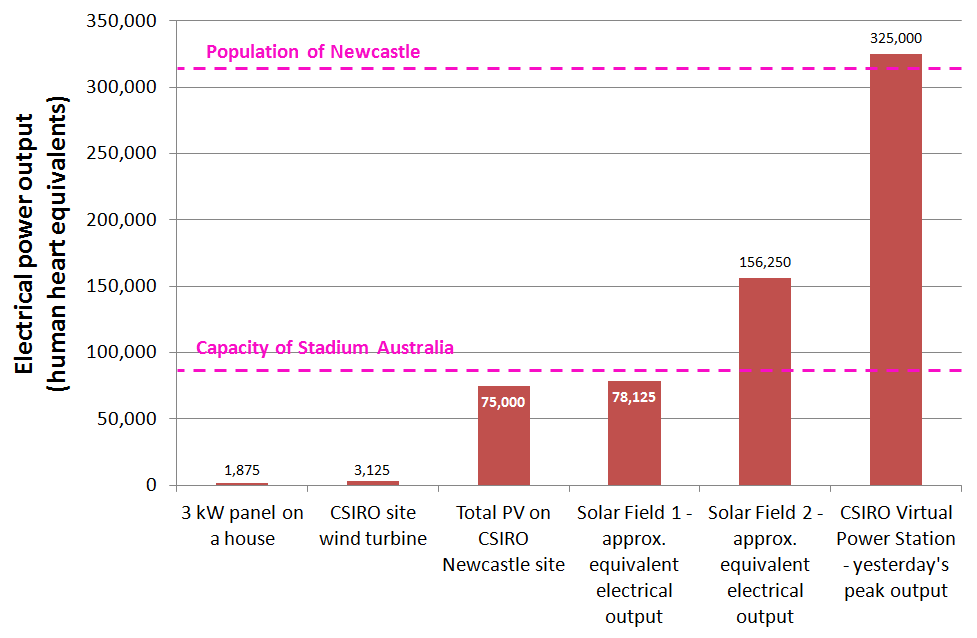Solar research makes our hearts beat faster. [Image by Wendy Brian of iHeartGuts.com]
Aww. It’s Valentine’s Day today in many countries around the world, meaning the annual bombardment of hearts is upon us again: sugary-sweet hearts, super-sweet hearts, super-sized hearts and even some super-strange hearts. But the iconic curvy ‘love heart’ might have originated from a simplistic drawing of the human heart, which long ago was seen as the place in the body where the soul (and, presumably, romance) lived.
Nowadays, thanks to science, we have much less poetic notions about what the heart actually does (although, to compensate, what we know now is much, much more likely to save your life). We all know, for example, that the heart is the powerhouse that keeps your blood circulating.
So, just for fun, we thought that this Valentine’s Day it’d be fun to compare the power of the human heart to the power we can get from some of the different technologies we’re working at CSIRO.
The power of the heart
We can work out the average power of the heart by multiplying the peak pressure inside the heart (120 mmHg, or 16 kPa) by the rate of blood flow (say about 6 litres per minute, or 0.0001 m3/s). This gives us the magic number we’re going to use for the heart’s power: 1.6 Watts. Over the course of a day, this adds up to an energy output of 140 kJ (or 33 Cal) each day.
So we created a thing called the Heart-o-meter. It shows the power output of some of our energy technologies from our National Energy Centre in Newcastle, in a unit we’re pretty sure we’ve just pioneered here at CSIRO – equivalent human hearts. Aww. Who said science can’t be romantic?
You can see that yesterday the photovoltaic cells in our Virtual Power Station had a power output that equalled, at one point, the total number of people’s hearts in Newcastle. That’s a lot of love.
Happy Valentine’s Day.
This article was originally published in February 2013.




14th February 2015 at 11:49 pm
Reblogged this on My Thoughts.